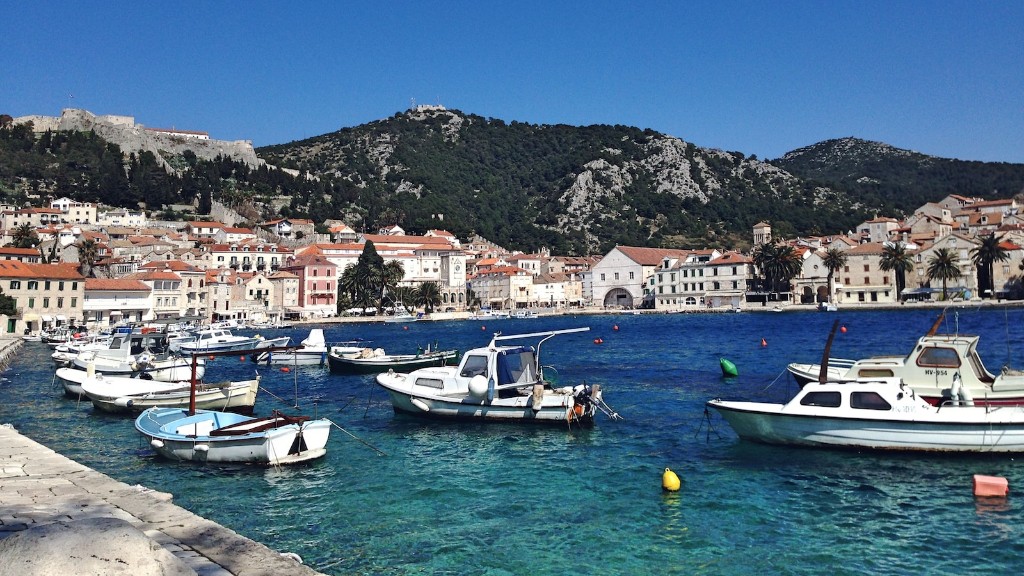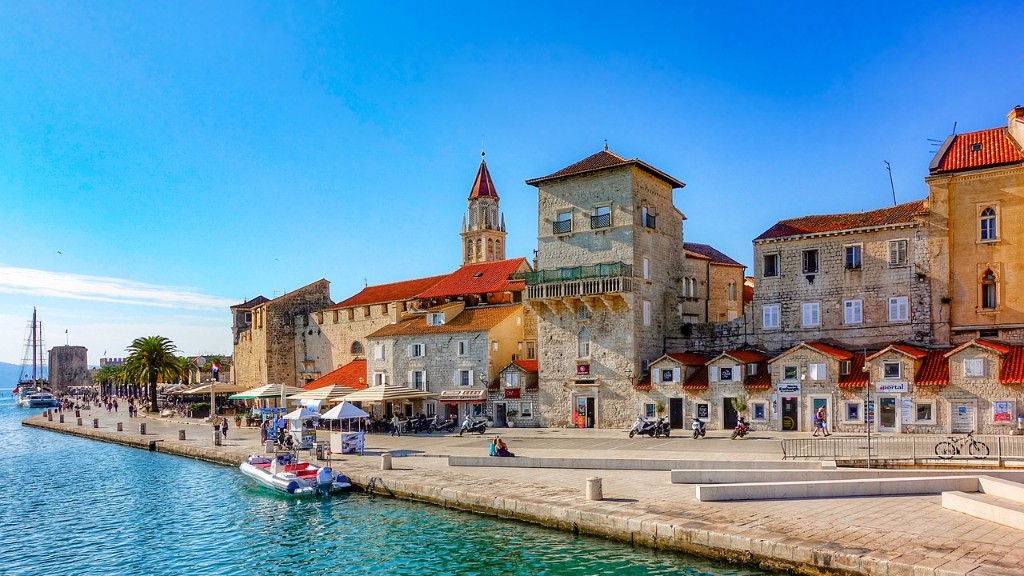Which Countries Border Croatia
Croatia, a nation that occupies the westernmost part of the Balkan Peninsula, is bordered by four countries: Hungary, Serbia, Bosnia & Herzegovina, and Montenegro. Although the boundaries of each of these countries have changed over time, their positions remain relatively constant. Understanding what makes each of these countries unique and their respective borders can help travelers and researchers better appreciate the region.
Hungary
Adjacent to Croatia’s northern border is Hungary, located to the north of the Hungarian Plain and bordering Austria, Slovakia, and Ukraine in addition to Croatia. With its capital, Budapest, being the largest city, Hungary is a landlocked country of diverse geographical regions, including the Eastern European Plain, the Carpathian Basin, and the middle Danube Depression. Its population consists mostly of Hungarians, making it one of the least-diverse countries in the European Union.
Serbia
To the east of Croatia lies Serbia, a country of diverse landscapes and traditions, home to the vibrant metropolis of Belgrade. Serbia is a landlocked country located east of the Adriatic Sea, and is bordered by Hungary, Bulgaria, Bosnia & Herzegovina, Montenegro, Albania, and Macedonia. Its population is largely composed of Serbians, the official majority ethnic group, although other ethnic groups are also present, such as Bosniaks, Croats, and Romanians.
Bosnia & Herzegovina
Adjacent to Croatia’s southern border is Bosnia & Herzegovina, an ethnically and culturally diverse country with two autonomous entities—the Bosniak-Croat Federation and the predominantly Serb Republika Srpska. Situated on the western Balkan Peninsula, Bosnia & Herzegovina is bordered by Croatia, Serbia, and Montenegro, and with its capital, Sarajevo, being a major cultural and economic center of the region.
Montenegro
Croatia’s eastern border is shared with Montenegro, a population of only about 600,000 people, with its capital, Podgorica, located on the Morača River, in the south central part of the country. Montenegro is bordered by Serbia, Bosnia & Herzegovina, Albania, and Croatia, and is home to both a diverse population of Slavic and Mediterranean origins, primarily composed of Montenegrins and Serbians.
History of Croatia’s Borders
The borders of Croatia changed drastically over the course of history. Throughout the Middle Ages, various kingdoms fought over the territory that is now modern-day Croatia. By the end of the 15th century, Croatia had been annexed by the Ottoman Empire, before gaining independence in 1918 under the Treaty of Versailles.
It is during this era that the current borders of Croatia would be set. Following World War II, it was officially declared a part of the Socialist Federal Republic of Yugoslavia, until it regained full independence in 1991. Croatia was then officially recognized as an independent country by the United Nations in 1992 following a referendum.
Impact on the Population
The different periods of history in which Croatia’s borders changed have had an impact on the population of the region, from the people who changed various rulers throughout the Middle Ages, to the unified Yugoslav population following World War II.
This, in turn, has created a unique cultural mix, which includes influences from religions, cuisines, languages, and customs from various parts of Europe. As a result, the cultures of each of Croatia’s four borders can be heavily felt in almost every aspect of Croatian life and provides an exciting backdrop to visitors and locals alike.
Unique Geographical Features
In addition to the diverse history that contributes to the cultural and political landscape of Croatia, the country is also home to a variety of unique geographical features. Spanning from the coastal regions of the Adriatic Sea to the hilly areas of the northeast, each of Croatia’s four borders contribute to the topography of the region.
For example, its northern border with Hungary features the Mura, a river that is often known as a channel of traditional cultures. Similarly, its southern border with Bosnia & Herzegovina is known for its rugged mountain ranges and deep canyons. As for Croatia’s eastern border with Montenegro, it is home to the spectacular Tara River Canyon—one of Europe’s most famous natural wonders.
Trade and Economy
Croatia’s long-standing relationships and close proximity with its neighbouring countries have enabled a steady and meaningful flow of goods, services, and people between the countries. This, in turn, has helped to boost the economy of Croatia, as the flow of goods, services, and people can bring innovation, new resources, and different perspectives to the region.
For instance, Hungary is a major importer of Croatian products, such as food, industrial machinery, and electrical equipment, and a major exporter of machinery, automotive parts, and various other products. Moreover, Serbia is a key partner in the energy market, as the country exports electricity and natural gas to Croatia. Furthermore, Croatia has an oil and gas pipeline agreement with Bosnia & Herzegovina, as well as a visa-free travel policy with Montenegro.
Tourism
The close proximity of Croatia to its four borders has also made it an attractive destination for tourists looking to explore the unique characteristics of each of the neighbouring countries. As an example, Hungary is home to many of Croatia’s most popular sites, such as the Danube, the Great Plain, and numerous historic cities and castles, while Serbia is known for its rich culture and wines, especially from the Vojvodina region.
Furthermore, visitors to Croatia may explore the remote sites of Bosnia & Herzegovina, such as Mostar or Sarajevo, and partake in the vibrant nightlife of Montenegro, particularly in the cities of Budva and Ulcinj. In addition, there are many recreational activities available in all four countries, including hiking, skiing, sailing, and more, making it the perfect destination for those looking for an active holiday.
Political Relations
Croatia plays an active role in strengthening its relations with its neighbouring countries, particularly in the diplomatic realm. Croatia holds observer status in the Central European Free Trade Agreement, which includes Hungary, Slovenia, Serbia, Bosnia & Herzegovina, Montenegro, and Albania.
Additionally, Croatia is a member of the Central European Strategy Council, which includes the abovementioned countries, as well as Romania, Bulgaria, Poland, Slovakia, and Ukraine. It also participates in various dialogue initiatives, such as the Western Balkans Summit, Western Balkan Process, and Western Balkan Security Co-operation.
Regional Cooperation
The European Union has also been instrumental in promoting and maintaining regional cooperation within the Balkan region. The Stabilisation and Association Process and the European Integration Process support the strengthening of regional borders and collaboration. This includes a share of joint projects regarding energy supply, transport, and digital infrastructure.
More recently, the Croatian government has been working to promote tourism and facilitate trade between its neighbouring countries. This includes the Cross-Border Cooperation Programme, an initiative to stimulate collaboration between local entrepreneurs and businesses.
Conclusion
From its diverse geographical features to its vibrant and unique culture, Croatia’s four borders have a great impact on the region. Understanding the historical and cultural aspects of the countries that border Croatia can help cultivate an appreciation for the region and brand as a whole. Through collaboration and cooperation, the countries of the Balkan region will continue to strive to create a safe and prosperous environment for locals and visitors alike.



